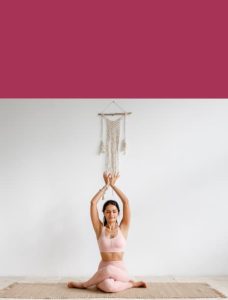Inclusive Yoga Teaching
Yoga is a popular fitness class that aims to bring physical, mental and emotional well-being to its students. It can help improve balance, strengthen muscles and reduce stress and anxiety. The benefits of yoga are available to anyone who is willing to take up the practice, regardless of age or ability. However, there are some things that yoga teachers and studios need to be aware of if they want to make their classes more inclusive.
It is essential for Yoga Teacher Training for bigger bodies online to recognise that different bodies need varying levels of support and attention. They should also be mindful of their own cueing and language so that they don’t unintentionally exclude people from certain groups from their classes. It is also important to be open to questions from adaptive yogis so that they can feel supported and safe asking for more assistance in the class.

A lot of yoga teachers like to use Sanskrit in their classes, whether that is because it’s easier for students to remember or they think it makes them look more experienced. But overusing the language can cause some students to feel excluded from the class because it’s hard for them to understand. Yoga is all about inclusivity, so it’s important that teachers use a variety of languages to ensure that everyone can participate.
Inclusive Yoga Teaching – Online Training For Body Positivity
The student-teacher relationship is sacred, and it’s essential that yogis of all abilities are welcomed into classes. However, some teachers can be prone to interrogating adaptive yogis or using sarcasm when they have questions. This can make adaptive yogis feel uncomfortable and unsure of their ability to complete the class. Instead, yoga teachers should try to develop a non-hierarchical relationship with their students and treat them as equals.
Despite the positive message of yoga, it can be difficult for some people to love and accept their bodies, especially if they fall outside of the cultural beauty ideal. For some, this can lead to eating disorders and other issues. Yoga teachers can do their part to make their classes a more body-positive environment by making adjustments, such as providing extra equipment and avoiding sarcastic, negative comments.
In addition to ensuring that all bodies are welcome in their classes, yoga instructors can also promote their classes on social media and email to encourage a diverse community to attend. They can also offer a sliding scale of payments or a pay what you can model to enable more people from disadvantaged backgrounds to afford their classes. This will not only provide access to the spiritual and health benefits of yoga, but it will also boost community spirit. Incorporating some of these changes into your yoga teaching can be as simple as changing the wording of your class descriptions or creating a YouTube channel where you can share tips and guidance with other yoga teachers. It’s time to start walking the talk of yoga inclusivity!